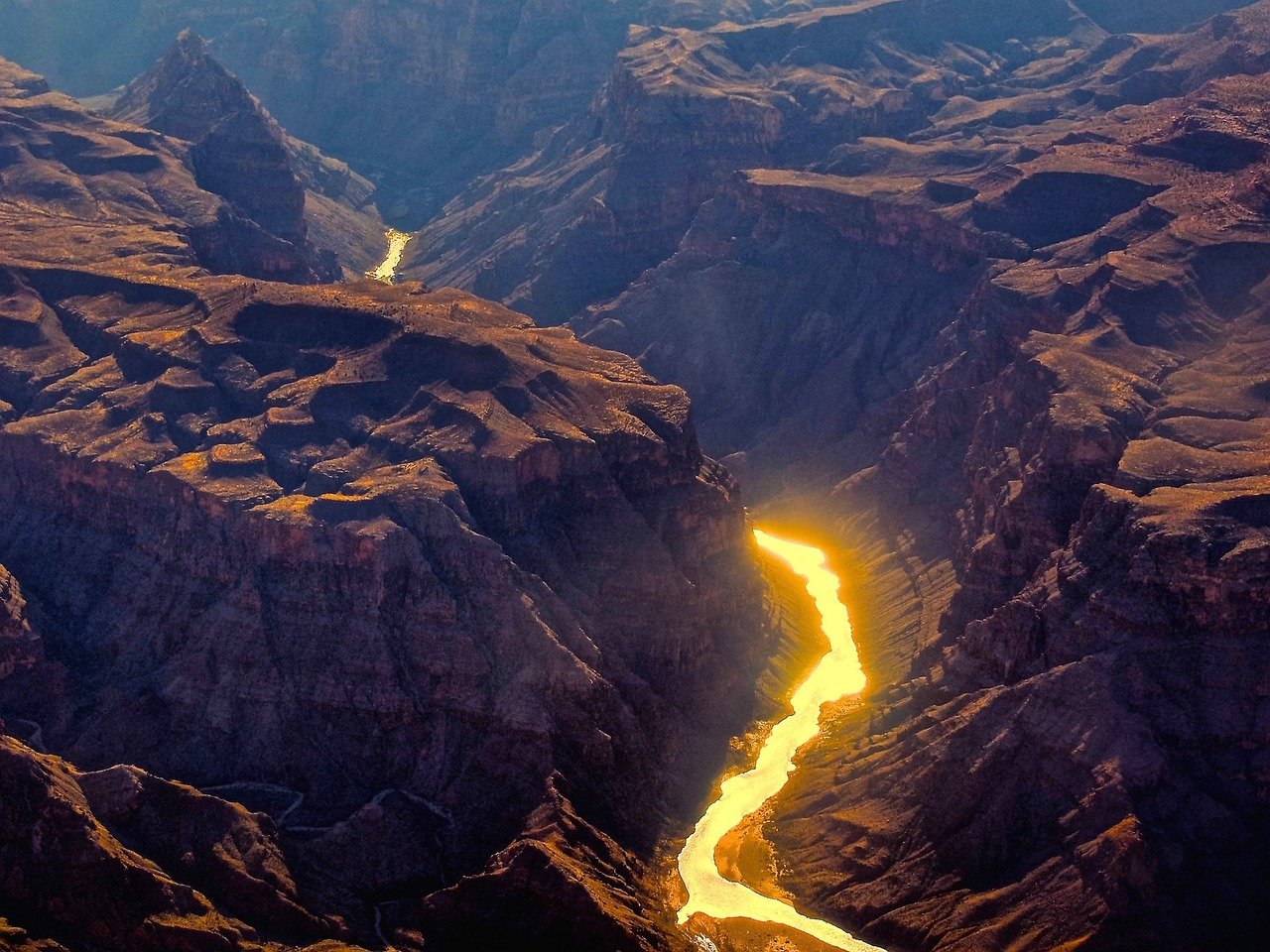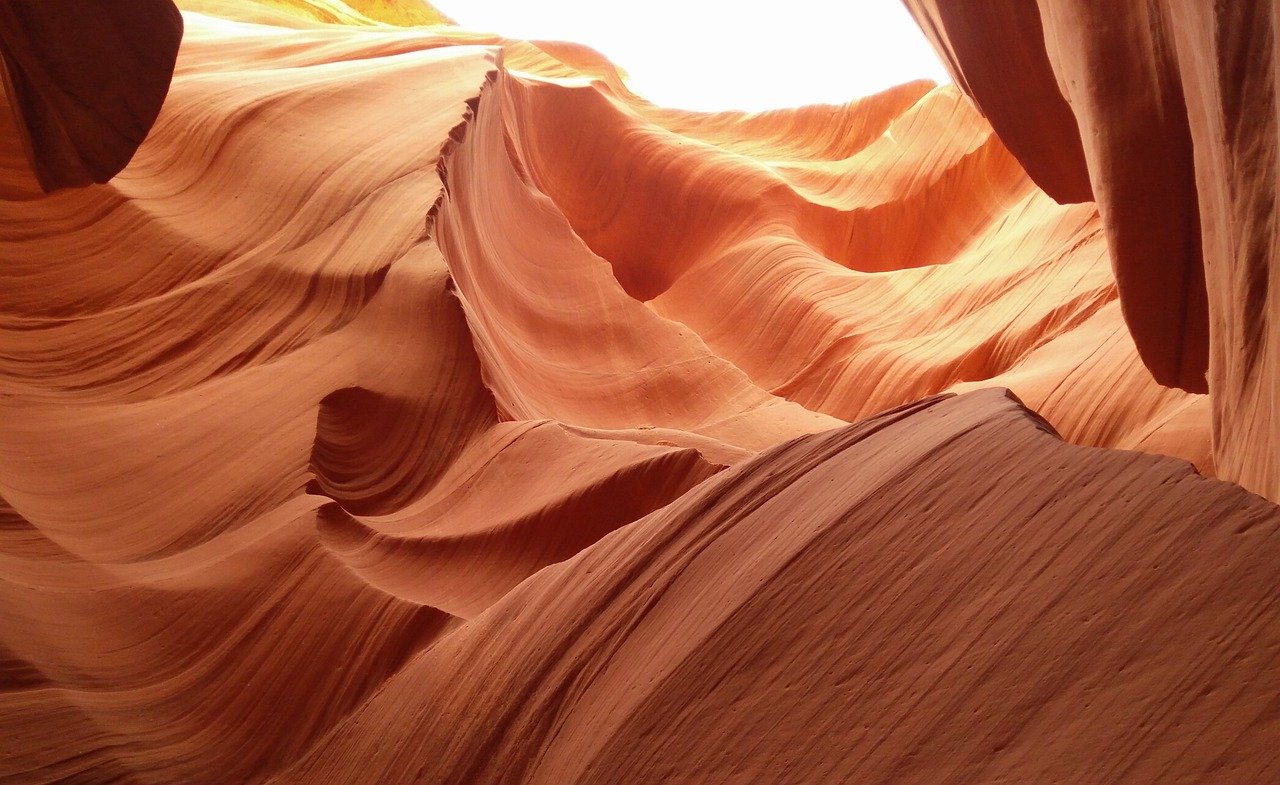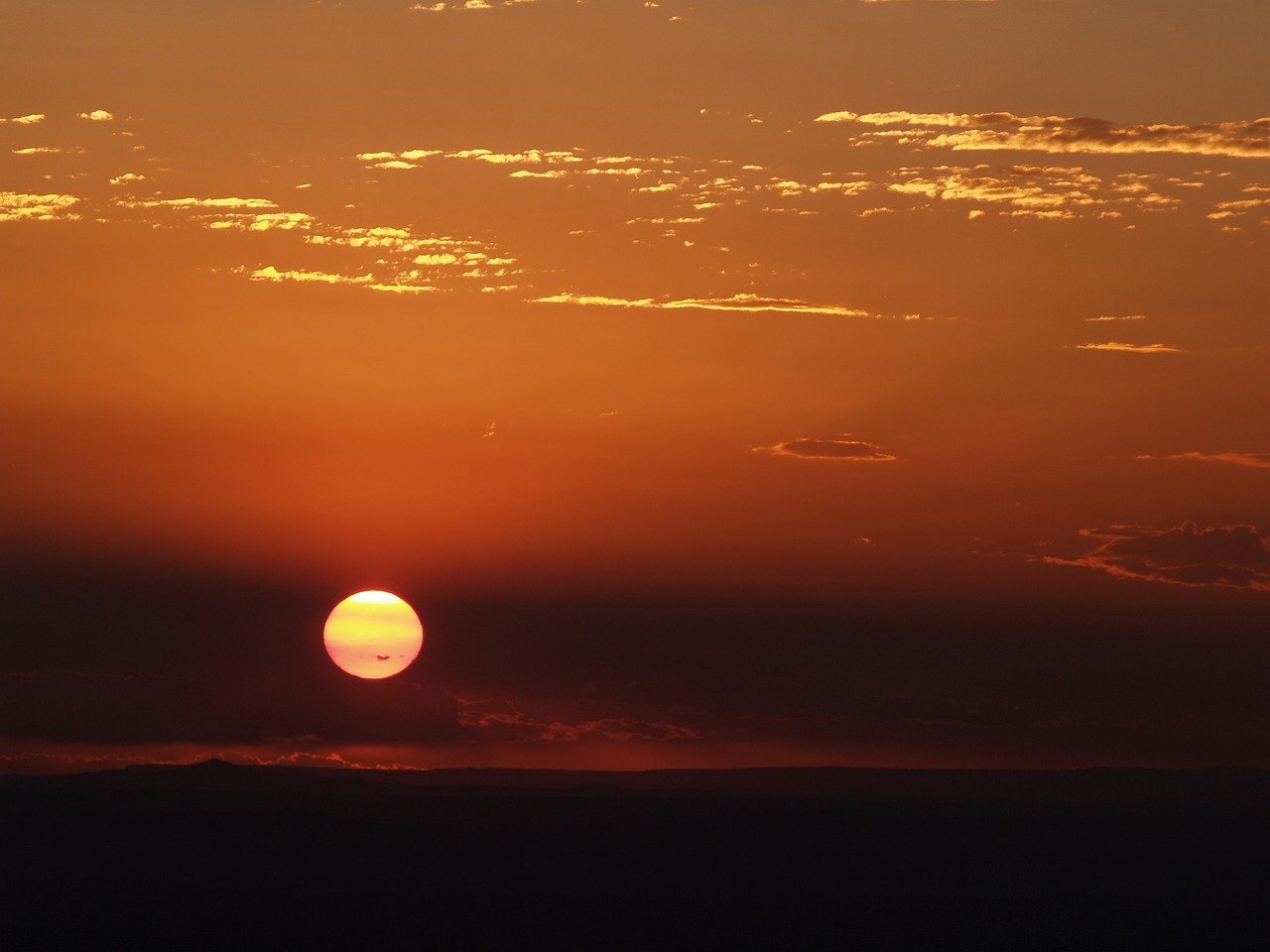-
Introduction to Grand Canyon National Park
Grand Canyon National Park, an iconic symbol of natural beauty and geological wonder, is situated in the northwestern region of Arizona, USA. Spanning over 1.2 million acres, the park is renowned for its immense scale and its intricate, colorful landscape. The Grand Canyon itself, carved by the mighty Colorado River, stretches approximately 277 miles in length, up to 18 miles in width, and more than a mile deep, making it one of the most impressive canyons in the world.
Recognized as a UNESCO World Heritage Site, the Grand Canyon holds great significance both as a natural marvel and a cultural landmark. Its rich history is interwoven with the stories of indigenous peoples, including the Havasupai, Hopi, Navajo, and Hualapai tribes, who have called this region home for thousands of years. These cultures have left an indelible mark on the landscape, contributing to its historical and spiritual importance.
The park is divided into several distinct regions, each offering unique perspectives and experiences. The South Rim, accessible year-round, is the most visited area, known for its breathtaking viewpoints such as Mather Point and Yavapai Observation Station. The North Rim, which sits at a higher elevation and provides a more secluded experience, is open seasonally from mid-May to mid-October. For the more adventurous, the Inner Canyon offers challenging hiking and rafting opportunities, revealing the canyon’s deeper geological layers and diverse ecosystems.
The Grand Canyon’s diverse landscapes and climatic variations create different experiences depending on the time of year. This seasonal guide aims to provide insights into the best times to visit each part of the park, helping visitors to plan their trips for optimal enjoyment and safety. Whether you seek the vibrant colors of the canyon walls, the tranquility of a less crowded trail, or the thrill of navigating the Colorado River, the Grand Canyon offers an unforgettable adventure at any time of the year.
Visiting in Spring (March-May)
Spring is a captivating time to visit Grand Canyon National Park, offering a unique blend of mild weather and vibrant natural beauty. During this season, temperatures are generally moderate, ranging from the mid-50s to mid-70s Fahrenheit, which creates a comfortable environment for exploring the park’s vast landscapes. The spring months bring a rejuvenation of flora, with blooming wildflowers adding splashes of color to the canvas of the canyon. This visual feast makes hiking and photography especially rewarding.
One of the key advantages of visiting the Grand Canyon in spring is the reduced number of tourists compared to the busier summer months. This relative tranquility allows for a more immersive experience, whether you’re hiking along the South Rim or venturing into lesser-known trails. The park’s natural beauty is accentuated by the serenity of fewer crowds, making it easier to appreciate the grandeur of the canyon without the hustle and bustle of peak season.
Spring also hosts several events and activities that cater to a range of interests. Wildlife spotting is particularly fruitful during these months, as animals become more active after the winter. Birdwatchers can enjoy the migration of various bird species, while guided ranger programs offer educational insights into the park’s ecology and history. For adventure enthusiasts, the milder weather is ideal for extensive hiking and even early-season rafting trips on the Colorado River.
However, visitors should be prepared for variable weather conditions. While the days can be pleasantly warm, temperatures can drop significantly in the evenings, and sudden rain showers are not uncommon. Additionally, some higher elevation areas might still have lingering snow, limiting access to certain trails and viewpoints. Despite these potential downsides, the advantages of experiencing the Grand Canyon’s springtime splendor often outweigh the inconveniences, making it a prime season for a visit.

Visiting in Summer (June-August)
Summer, spanning from June to August, marks the peak season for visiting Grand Canyon National Park. This period is characterized by warm to hot temperatures, particularly at the lower elevations where daytime highs can soar above 100°F (38°C). As a result, visitors should be prepared for intense heat, especially if planning activities in these areas.
The summer season also brings a surge in tourism, with the park bustling with visitors eager to explore its breathtaking landscapes. This influx means that popular viewpoints can become crowded, and advance reservations for accommodations and guided tours are highly recommended to secure a spot.
Despite the challenges posed by the heat and crowds, summer offers several advantages. The long daylight hours provide ample time for hiking, one of the most favored activities in the park. Trails like the Bright Angel Trail and the Rim Trail offer stunning vistas and varied terrain suitable for both novice and experienced hikers. Additionally, river rafting on the Colorado River is a sought-after adventure, providing a unique perspective of the canyon’s grandeur.
Ranger-led programs are abundant during the summer months, offering educational and interactive experiences for visitors of all ages. These programs, which include guided hikes, evening talks, and cultural demonstrations, enhance the visitor experience by providing deeper insights into the park’s natural and historical significance.
One of the significant benefits of visiting in summer is the full accessibility of park facilities. All visitor centers, lodges, and campgrounds operate at full capacity, ensuring that guests have access to necessary amenities and services.
However, visitors should also be aware of potential summer thunderstorms, which can lead to sudden and severe weather changes. Being prepared with appropriate gear and staying informed about weather forecasts is crucial for a safe and enjoyable visit.
Overall, while the summer season at Grand Canyon National Park presents certain challenges, it also offers unparalleled opportunities for exploration and adventure, making it a memorable time to visit this natural wonder.

Visiting in Fall (September-November)
Fall is an exceptional time to visit Grand Canyon National Park, offering a unique blend of cooler weather and vibrant autumn foliage that transforms the landscape into a picturesque wonderland. As the summer heat wanes, temperatures become more moderate and stable, providing a comfortable environment for exploration. Daytime highs typically range from the upper 60s to lower 70s Fahrenheit, making outdoor activities far more enjoyable than during the scorching summer months.
One of the most appealing aspects of visiting the Grand Canyon in the fall is the significant reduction in tourist numbers. With fewer visitors, the park feels more tranquil and the trails are less crowded, allowing for a more peaceful and immersive experience. This serenity is particularly advantageous for those seeking a deeper connection with nature or aiming to capture stunning photographs without the usual bustle.
Autumn also brings a variety of fall-specific events and activities. Visitors can enjoy ranger-led programs that delve into the natural and cultural history of the area, as well as special events that celebrate the season. The changing foliage adds a dramatic splash of color to the already breathtaking vistas, making every view even more spectacular.
Additionally, fall marks the reopening of certain trails and viewpoints that might have been closed during the summer due to extreme heat. This expanded access allows for a broader exploration of the park’s diverse landscapes and hidden gems. However, it’s important to note some challenges that come with a fall visit. Daylight hours are shorter, which necessitates careful planning to make the most of your time. Moreover, some park amenities and services may close earlier in the day, so visitors should check schedules in advance to avoid inconvenience.
Overall, the fall season offers a remarkable opportunity to experience the Grand Canyon in a more serene and visually stunning setting, enhanced by the cooler weather and vibrant autumn colors.
Visiting in Winter (December-February)
Winter at the Grand Canyon National Park brings a unique and serene beauty that is truly captivating. The canyon, often dusted with a blanket of snow, offers a striking contrast to its usually arid and rugged landscape. During these months, temperatures can plummet, with daytime highs averaging between 40 and 50 degrees Fahrenheit and nighttime temperatures frequently dropping below freezing. Visitors should be prepared for potential snowfall, which can enhance the canyon’s beauty but also pose challenges.
One of the most significant advantages of visiting the Grand Canyon in winter is the reduced number of tourists. The tranquility and solitude make it a perfect time for those seeking a more introspective experience or photographers aiming to capture the canyon’s winter beauty without the usual crowds. Winter also offers unique activities such as snowshoeing along the rim trails and stargazing on clear, crisp nights, when the sky is remarkably clear and the stars appear more vibrant.
However, visiting during winter does come with its drawbacks. The North Rim is closed to visitors due to heavy snowfall, limiting access to only the South Rim. Additionally, road closures can occur, making travel plans more unpredictable. It’s crucial for visitors to check weather forecasts and road conditions regularly. Proper winter gear is essential, including warm clothing, sturdy footwear, and possibly traction devices for icy paths.
Despite these challenges, the serene beauty and unique experiences available in winter make it a worthwhile time to visit the Grand Canyon. With adequate preparation and a spirit of adventure, a winter visit can offer an unforgettable perspective on this natural wonder.

Best Time for Hiking and Outdoor Activities
The Grand Canyon National Park offers a wide range of outdoor activities that vary in appeal depending on the season. For hiking enthusiasts, spring and fall are particularly advantageous. During these seasons, moderate temperatures and fewer crowds create an optimal environment for exploring the park’s extensive trail network. Popular trails like the Bright Angel Trail and the South Kaibab Trail are less congested, allowing for a more serene and immersive experience. It is advisable to bring layered clothing, as temperatures can fluctuate significantly throughout the day. A sturdy pair of hiking boots, plenty of water, and a detailed map are essential items to ensure a safe and enjoyable hike.
Summer, while characterized by intense heat, presents unique opportunities for water-based activities. The Colorado River, which carves through the canyon, becomes a hotspot for rafting adventures. Guided rafting tours offer a thrilling way to experience the canyon’s majestic beauty from a different perspective. However, it is crucial to prepare for extreme temperatures, sometimes exceeding 100°F (38°C). Lightweight, moisture-wicking clothing, ample sunscreen, and hydration packs are indispensable for staying cool and protected.
Winter, often overlooked, can be a magical time to visit the Grand Canyon for those who appreciate snow and the cold. While the North Rim closes due to heavy snowfall, the South Rim remains accessible and transforms into a winter wonderland. Activities such as snowshoeing and cross-country skiing become viable options. Visitors should be equipped with warm, waterproof clothing, insulated boots, and traction devices for icy trails. Additionally, shorter daylight hours and potential road closures necessitate careful planning and an awareness of weather forecasts.
Regardless of the season, safety should always be a priority. Familiarize yourself with the park’s guidelines, and inform someone of your plans. Whether navigating sun-soaked trails or snowy paths, preparation and awareness are key to making the most of your Grand Canyon adventure.

Wildlife and Plant Life Throughout the Year
The Grand Canyon National Park is a treasure trove of biodiversity, with its ecosystems offering a dynamic range of flora and fauna that shift with the seasons. Each season brings a unique set of opportunities to witness the park’s rich wildlife and plant life.
In the spring, the Grand Canyon bursts into color with the bloom of wildflowers like the Indian paintbrush, lupine, and mariposa lily. This is an ideal time to explore the park’s flora as the lower elevations are awash with vibrant hues. Additionally, spring is a prime time for birdwatching, with migratory species such as the western tanager and violet-green swallow making their appearance.
Summer sees an increase in the activity of larger animals. Bighorn sheep can often be spotted in the early morning or late afternoon near the canyon’s cliffs, while mule deer frequently wander near the water sources. Summer months also bring the desert cottontail and various reptiles into view. However, caution is advised as temperatures can soar, making early morning or late evening the best times for wildlife observation.
Fall is marked by a spectacular display of foliage, particularly in the North Rim, where aspens and maples transform into a blend of golds and reds. This is also a good time to see elk as they are more active during their mating season. Raptors such as the peregrine falcon and California condor are often sighted soaring above the canyon, taking advantage of the cooler air currents.
Winter offers a unique perspective with the snow-capped landscape providing a stark contrast to the canyon’s red rocks. This season provides a rare opportunity to see animals like the mule deer and elk against a snowy backdrop. Bird species such as the Steller’s jay and northern flicker are commonly seen during this period. Winter hikes can be rewarding, but it’s essential to be prepared for icy conditions.
For responsible wildlife observation, it is crucial to maintain a safe distance from animals, use binoculars for a closer view, and avoid feeding or disturbing them. Staying on designated trails and respecting the natural habitat ensures that both wildlife and visitors can coexist harmoniously.
Practical Tips for Planning Your Visit
Planning a trip to Grand Canyon National Park requires careful consideration of several factors, especially given the seasonal variations that can significantly affect your experience. One of the primary aspects to consider is accommodation. The park offers a range of options from camping sites to lodges. During peak seasons, such as spring and fall, it is crucial to book your accommodation well in advance. The lodges within the park can fill up quickly, and nearby towns may also see a surge in visitors, making last-minute bookings challenging.
Transportation is another critical component of your trip planning. Depending on the season, roads can be closed due to snow or maintenance, particularly during winter. The South Rim remains open year-round and is more accessible, while the North Rim is typically closed from mid-October to mid-May due to heavy snowfall. If you prefer a more relaxed visit, consider visiting during the shoulder seasons of late spring or early fall, when the weather is mild, and the crowds are thinner.
Packing appropriately for the season is essential for a comfortable and safe visit. In summer, lightweight clothing, sunscreen, hats, and plenty of water are necessary to combat the intense heat. Conversely, winter visitors should pack layers, including insulated jackets, gloves, and hats, as temperatures can drop significantly. Spring and fall offer milder conditions, but it’s still wise to bring layers and rain gear, as weather can be unpredictable.
Safety should always be a priority. Ensure you are familiar with park regulations and obtain any necessary permits for activities like backcountry hiking or river rafting. The park’s terrain can be challenging, and weather conditions can change rapidly. Always inform someone of your plans, carry a map, and have a reliable means of communication.
By considering these practical tips and tailoring your plans to the specific season, you can ensure a memorable and enjoyable visit to the Grand Canyon National Park.

I am really inspired along with your writing skills as well as with the structure for your weblog. Is that this a paid subject or did you customize it yourself? Either way keep up the nice high quality writing, it’s uncommon to look a great weblog like this one today!
I’m really impressed with your writing talents and also with
the structure on your weblog. Is this a paid topic or did you customize it
your self? Anyway stay up the nice quality writing, it is uncommon to see a great blog like this
one today. Stan Store!
продать аккаунт https://birzha-akkauntov-online.ru/
маркетплейс для реселлеров площадка для продажи аккаунтов
безопасная сделка аккаунтов https://magazin-akkauntov-online.ru
покупка аккаунтов продать аккаунт
аккаунты с балансом магазин аккаунтов
купить аккаунт перепродажа аккаунтов
биржа аккаунтов маркетплейс аккаунтов соцсетей
Gaming account marketplace Account Buying Service
Buy and Sell Accounts https://accountsmarketplacepro.com
Account exchange Account exchange
Account Market Secure Account Purchasing Platform
Secure Account Sales Account Purchase
Buy accounts Database of Accounts for Sale
Marketplace for Ready-Made Accounts Marketplace for Ready-Made Accounts
Sell Account Buy Account
Buy and Sell Accounts Account Buying Platform
Social media account marketplace Account Sale
marketplace for ready-made accounts accounts marketplace
website for buying accounts database of accounts for sale
buy account account acquisition
guaranteed accounts account catalog
ready-made accounts for sale buy account
secure account sales https://buycheapaccounts.com
accounts marketplace account selling service
buy account find accounts for sale
account selling platform account sale
website for selling accounts account acquisition
account buying service ready-made accounts for sale
account selling platform account catalog
database of accounts for sale secure account sales
account market ready-made accounts for sale
account market sell pre-made account
social media account marketplace account trading platform
purchase ready-made accounts secure account purchasing platform
website for selling accounts account trading platform
buy and sell accounts account selling service
accounts for sale online account store
website for buying accounts account purchase
account selling service buy accounts
account trading platform account exchange service
account purchase accounts marketplace
account selling platform find accounts for sale
buy accounts account selling service
account trading platform secure account sales
ready-made accounts for sale verified accounts for sale
account trading platform https://accounts-offer.org
sell pre-made account https://accounts-marketplace.xyz
website for buying accounts https://buy-best-accounts.org
secure account sales buy accounts
gaming account marketplace https://accounts-marketplace.live/
account trading service https://social-accounts-marketplace.xyz/
ready-made accounts for sale account marketplace
accounts market https://buy-accounts-shop.pro/
sell account https://buy-accounts.live
account marketplace https://social-accounts-marketplace.live
account selling service account market
account purchase accounts marketplace
биржа аккаунтов https://akkaunty-na-prodazhu.pro/
маркетплейс аккаунтов https://rynok-akkauntov.top/
продажа аккаунтов kupit-akkaunt.xyz
купить аккаунт https://akkaunt-magazin.online/
маркетплейс аккаунтов https://akkaunty-market.live/
маркетплейс аккаунтов маркетплейсов аккаунтов
купить аккаунт https://akkaunty-optom.live
купить аккаунт online-akkaunty-magazin.xyz
магазин аккаунтов akkaunty-dlya-prodazhi.pro
площадка для продажи аккаунтов https://kupit-akkaunt.online/
buy fb account https://buy-adsaccounts.work
buy facebook accounts fb accounts for sale
buy facebook ad account https://buy-ad-account.top
buy facebook accounts for advertising buy facebook account for ads
buy facebook account facebook ad account for sale
buy fb ad account buy facebook ads account
buy facebook account for ads https://ad-account-for-sale.top
facebook ad account for sale buy facebook profiles
facebook accounts for sale https://ad-accounts-for-sale.work/
google ads agency accounts https://buy-ads-account.top
old google ads account for sale https://buy-ads-accounts.click
buy facebook account https://buy-accounts.click
buy aged google ads accounts https://ads-account-for-sale.top
buy adwords account https://ads-account-buy.work
buy google ads threshold accounts https://buy-ads-invoice-account.top
buy google ads accounts https://buy-account-ads.work
buy google ad account buy adwords account
buy google ads verified account https://sell-ads-account.click
buy verified google ads account https://ads-agency-account-buy.click/
buy bm facebook buy-business-manager.org
buy aged google ads accounts https://buy-verified-ads-account.work
buy facebook business manager verified https://buy-bm-account.org
buy facebook bm account buy-verified-business-manager-account.org
buy facebook business manager accounts https://buy-verified-business-manager.org/
verified business manager for sale https://business-manager-for-sale.org/
buy facebook business manager accounts buy-business-manager-verified.org
facebook bm account https://buy-bm.org
buy fb business manager https://verified-business-manager-for-sale.org/
buy facebook bm account https://buy-business-manager-accounts.org/
buy tiktok ad account https://buy-tiktok-ads-account.org
tiktok agency account for sale https://tiktok-ads-account-buy.org
buy tiktok ads buy tiktok business account
buy tiktok ads accounts https://tiktok-agency-account-for-sale.org
buy tiktok ads https://buy-tiktok-ad-account.org
tiktok ads agency account https://buy-tiktok-ads-accounts.org
buy tiktok ads account https://buy-tiktok-business-account.org
tiktok agency account for sale https://tiktok-ads-agency-account.org
tiktok ads account buy https://buy-tiktok-ads.org
how to vape safely by purchasing from reputable sources, following device guidelines, avoiding overuse, properly charging batteries, and storing your vape away from heat and children to reduce risks and enjoy a safer experience.
¡Saludos, aventureros del riesgo !
Casino sin licencia con giros gratis sin verificaciГіn – http://casinossinlicenciaenespana.es/ casinossinlicenciaenespana.es
¡Que vivas jackpots impresionantes!
¡Hola, amantes de la emoción !
Mejores casinos online extranjeros sin correo obligatorio – https://www.casinoextranjerosespana.es/ mejores casinos online extranjeros
¡Que disfrutes de asombrosas botes espectaculares!
¡Saludos, amantes del entretenimiento !
Casinos extranjeros con acceso desde dispositivos mГіviles – https://casinosextranjerosenespana.es/# casinos extranjeros
¡Que vivas increíbles jugadas excepcionales !
¡Hola, fanáticos del riesgo !
Casino sin licencia y promociones activas – http://casinossinlicenciaespana.es/ https://casinossinlicenciaespana.es/#
¡Que experimentes instantes únicos !
¡Hola, descubridores de recompensas !
Casinos online fuera de EspaГ±a con pagos inmediatos – п»їп»їhttps://casinoonlinefueradeespanol.xyz/ casino online fuera de espaГ±a
¡Que disfrutes de asombrosas tiradas afortunadas !
¡Saludos, visitantes de plataformas de apuestas !
Mejores promociones en casinoextranjerosenespana.es – https://www.casinoextranjerosenespana.es/# п»їcasinos online extranjeros
¡Que disfrutes de recompensas increíbles !
Этот информативный материал предлагает содержательную информацию по множеству задач и вопросов. Мы призываем вас исследовать различные идеи и факты, обобщая их для более глубокого понимания. Наша цель — сделать обучение доступным и увлекательным.
Ознакомиться с деталями – https://nakroklinikatest.ru/
¡Saludos, descubridores de tesoros !
Experiencia fluida en casinos online extranjeros – https://casinosextranjero.es/# п»їcasinos online extranjeros
¡Que vivas increíbles instantes inolvidables !
¡Bienvenidos, expertos en el juego !
Casino fuera de EspaГ±a sin restricciones geogrГЎficas – https://www.casinoporfuera.guru/ п»їcasino fuera de espaГ±a
¡Que disfrutes de maravillosas triunfos legendarios !
¡Hola, estrategas del azar !
Casinos online extranjeros con grГЎficos 3D de Гєltima generaciГіn – https://www.casinoextranjero.es/# casinoextranjero.es
¡Que vivas oportunidades irrepetibles !
¡Saludos, jugadores apasionados !
casinosonlinefueraespanol con ruleta europea – https://www.casinosonlinefueraespanol.xyz/# casinosonlinefueraespanol
¡Que disfrutes de momentos irrepetibles !
¡Hola, buscadores de tesoros ocultos !
Casino online extranjero sin espera en retiros – https://www.casinosextranjerosdeespana.es/ casinosextranjerosdeespana.es
¡Que vivas increíbles instantes únicos !
¡Saludos, cazadores de premios únicos!
Casinoextranjerosdeespana.es – Tu guГa de apuestas – п»їhttps://casinoextranjerosdeespana.es/ casino online extranjero
¡Que experimentes maravillosas triunfos inolvidables !
?Hola, descubridores de oportunidades unicas!
casinos fuera de EspaГ±a con sistema de puntos – https://casinosonlinefueradeespanol.xyz/# п»їcasino fuera de espaГ±a
?Que disfrutes de asombrosas conquistas impresionantes !
Hello advocates of well-being !
Best Air Purifiers for Smokers – Clean Air Machines – http://bestairpurifierforcigarettesmoke.guru best air filter for cigarette smoke
May you experience remarkable fresh inhales !
¡Hola, cazadores de tesoros ocultos !
Casino online sin licencia EspaГ±a sin lГmite de apuesta – http://casinosinlicenciaespana.xyz/# casino sin licencia
¡Que vivas increíbles victorias memorables !
¡Saludos, fanáticos del desafío !
Casino sin licencia con acceso global – https://www.audio-factory.es/ casinos sin licencia en espana
¡Que disfrutes de asombrosas momentos irrepetibles !
¡Saludos, fanáticos de los desafíos !
Emausong.es con acceso a juegos sin restricciones – п»їemausong.es mejores casinos sin licencia en espaГ±a
¡Que disfrutes de increíbles instantes memorables !
¡Hola, fanáticos del riesgo !
Casino online sin licencia y sin bloqueo regional – https://casinosonlinesinlicencia.es/# casino sin licencia espaГ±a
¡Que vivas increíbles victorias memorables !